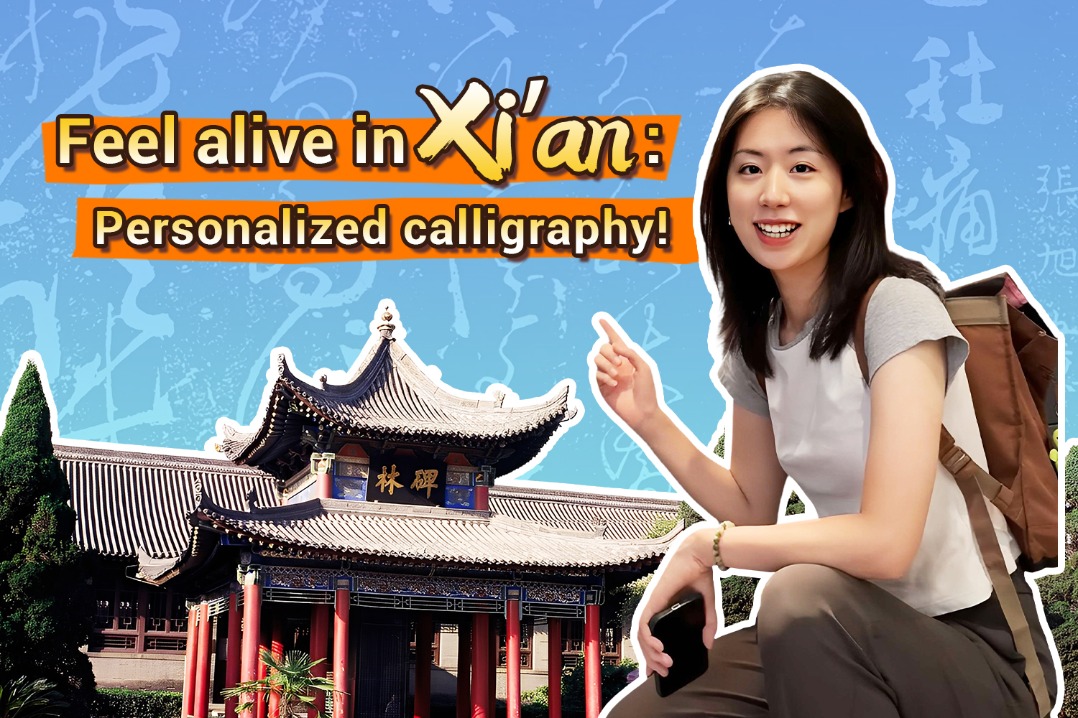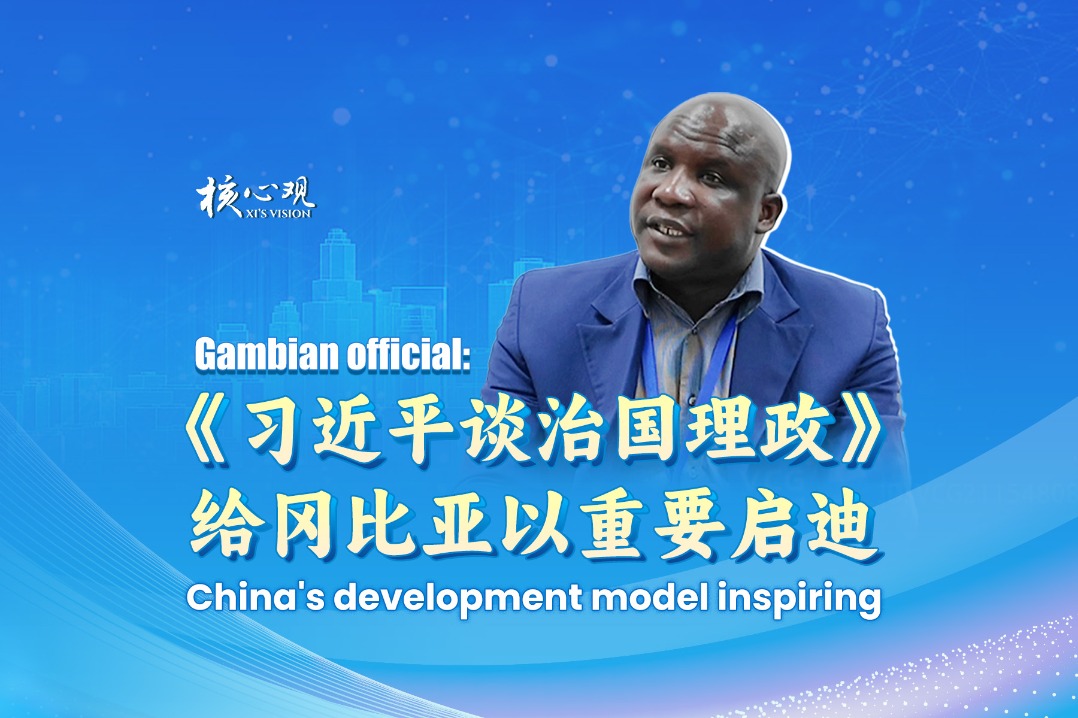Is ChatGPT a high-tech breakthrough?
chinadaily.com.cn | Updated: 2023-02-09 15:23

Editor’s note: Artificial intelligence-powered chatbot, ChatGPT, has been a hot topic of online discussions mainly for its “chatty” nature. Is ChatGTP a new technology revolution? In which areas has it made breakthroughs and what are its shortcomings? Three experts share their views on these issues with China Daily’s Zhao Manfeng:
ChatGPT is high-tech progress, not a revolution
ChatGPT is a powerful chatbot developed by OpenAI and launched in November 2022. Built on top of OpenAI’s GPT-3 family of large language models, it engages in human-like dialogue egged by prompting. It is designed to respond in a natural, intuitive way and has numerous potential uses.
From a scientific point of view, there is a need to closely watch the development of such technologies before reaching a conclusion about their efficacy and helpful nature. Technology progresses step by step. So we should not panic thinking ChatGPT will take up jobs that till now needs humans to fulfill.
ChatGPT is an example of high-tech progress, not a revolution.
First, ChatGTP has made quite some progress in natural language processing, yet it still has a long way to go to completely ape the human mind and language faculty, because when it comes to professional writing or execution of a job, ChatGPT at times writes plausible-sounding but incorrect or nonsensical answers. It might give some good answers to most of the general questions, and it can produce articles, essays, jokes and even poetry with the a little prompting, yet it is no substitute for professional advice, such as medical prognosis and prescriptions, or legal advice.
Second, ChatGPT is still a product with very limited application. It has the potential to be used for enhancing search engine functionality but, as a pre-trained language model, it will have limited use.
It is new technology, no doubt, which we should study, but investors should not blindly invest huge amounts to further develop ChatGPT, because it may not turn out to be successful and create bubbles in the high-tech market.
Jing Jiwu, a professor at the University of Chinese Academy of Sciences.
No quick return on investment
The pre-trained, large-scale chatbot models, led by ChatGPT, could be one of the most important developments in the field of AI and play a key role in future AI products and applications.
As a pre-trained AI model, ChatGPT is based on the GPT-3 family of large language models and is fine-tuned to supervise and reinforce learning techniques. The GPT-3, or Generative Pre-trained Transformer 3, has already caused a sensation. So we can say it is an optimized language model based on the development of AI technology.
Also, the fact that ChatGPT is good at multi-tasking is a breakthrough. This is beyond the imagination of many people, because in the past AI models could perform only a single task. For example, if you used an AI program to translation something, the program would just translate the piece. Now with ChatGPT, multi-tasking is easy to achieve.
As a pre-trained language model, ChatGPT is equipped with a massive volume of data, so it can accurately decide which word comes next in a sentence and thus stabilize its reliable performance, especially in the era of deep neural networks. That’s why many users are surprised at its ability to come up with human-like responses, creating the impression that it could replace humans in certain jobs one day.
Another feature of ChatGPT is that it has the ability to reinforce learning through feedback. It can recalculate figures or rewrite reports according to the user’s feedback on the answer. And this is one of the reasons why its performance is being optimized.
Yet it still has its shortcomings. For one thing, it could only be applied in a limited number of fields as it is a content-generating model. And the content it generates depends on what it has been pre-trained in. Therefore, despite writing articles, essays, jokes and even poetry, ChatGPT could be used only as reference, just like a search engine. It can never be a substitute for professional, in-depth knowledge ad research.
Due to these limitations, investment in ChatGPT should focus on research and development, and investors should not expect quick returns on investment. Yet as a promising AI development, ChatGPT is likely to advance in the medium, if not the short term.
Tao Jianhua, a professor at department of automation, Tsinghua University.
China needs its ownChatGPT model
It is important to view ChatGPT objectively. As a pre-trained large-scale language model developed by OpenAI, ChatGPT is a kind of groundbreaking research. Large-scale language models may have an impact on copywriting and other industries, and will also change the mode of education and scientific research. In the future, some simple, repetitive and less innovative jobs, and even some white-collar jobs, may get replaced by large-scale language models. But it is not infallible, and its potential risks have not been thoroughly studied. You can talk to it, acquire general knowledge or even get entertained by it, but it cannot be the sole source of your information, let alone take your place.
It is an AI program. And although its functions are very helpful to humans, they should not be deified. First, AI itself has been on the cusp of rising to greater heights in recent years. What’s more, ChatGPT can meet some “lazy” people’s need of avoiding repetitive and boring mental work. But mental work itself is part of the human cognitive faculty.
Search engines used to retrieve large volumes of information, enabling people to view page after page. With the aid of ChatGPT, search engines can present more precise answers to complex questions, and users can now get information in a more relaxing way of dialogue.
China has also developed its own large-scale language models, such as Huawei’s Pangu NLP models, Baidu’s ERNIE, Tencent’s HUNYUAN NLP models, and Alibaba’s AliceMind, and the performance of the models in natural language processing has been excellent. But China's large-scale language model needs to focus more on deeper technologies, and should not blindly follow the trend.
Since ChatGPT is also a dialogue model, China needs more custom models in specific fields, such as the modern Chinese language, ancient Chinese language, minority languages, and dialects, to break the language barrier among people.
Zhang Huaping, an associate professor on natural language processing at Beijing Institute of Technology.
























